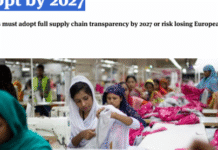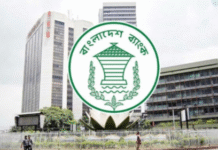


Foreign assistance disbursement jumped 58 per cent in the current fiscal year’s July-April period thanks to spending for vaccination, one-time budget support and implementation of mega projects, including that of the Russia-funded Rooppur nuclear power plant.
Development partners disbursed $7.71 billion, up from $4.86 billion in the previous fiscal year, according to data of Economic Relations Division (ERD).
This was the highest growth since fiscal 2017-18, when it had ballooned 74 per cent year-on-year to hit $6.1 billion, according to data compiled by Bangladesh Bank.
Despite the SWIFT ban, Russia provided the fourth largest loan, $1.05 billion, a majority of which was spent on the Rooppur plant.
The Rooppur plant will cost Tk 113,092 crore while Tk 51,292 crore has been spent till April this fiscal year.
The project is about 46 per cent complete as of April, the best performance exhibited among the mega projects this year. Progress has been as per schedule with the first unit to open by 2024 and the second unit by 2025.
The project had become mired in uncertainty following Russia’s invasion of Ukraine and the resulting Western sanctions against Russia.
The project is being constructed on a build-and-finance deal with Russian state agency Rosatom, which is responsible for 76 per cent of global nuclear technology exports.
No fund comes in from Russia but equipment and technology, whose values are counted as expenditure for setting up the nuclear plant.
Asian Development Bank (ADB) topped the fund disbursement list with $1.99 billion.
A finance ministry official said the Manila-based development lender has already disbursed around $1 billion in assistance for Covid-19 vaccination.
Besides, it has almost disbursed all its budgetary support for this fiscal year, as a result of which the total amount has been increased.
Japan has become the second biggest financial support provider with $1.7 billion.
The ERD officials say several mega projects funded by Japan, including that of the Dhaka metro rail, Matarbari port and coal-fired power project, are being implemented in in full swing following the easing of the coronavirus restrictions.
The third highest lender is World Bank, which disbursed $1.16 billion.
A good amount of funds have been disbursed by World Bank to support efforts aimed at tackling the pandemic along with regular loans.
According to officials, there was not much use of the World Bank fund initially. But it has recently picked up and the government has spent a majority of the fund under Covid-19 support.
Bangladesh has set an ambitious target to receive $12.98 billion in foreign assistance from the development partners in the current fiscal year.
But the ERD may slash the allocation target in the revised budget by $1.5 billion as the fund use has been lower than expected. Bangladesh spent around $3 billion to $3.5 billion annually from 2013-14 to 2016-17.
Spending of foreign funds crossed $7 billion per year since fiscal year 2018-19.
At the same time, the amount of aid pledged by development partners rose 11 per cent year-on-year to $5.89 billion at the end of April.
Besides, the principal and interest payments of foreign loans are also increasing. From July to April this year, $1.75 billion has been repaid. At the same time last year, it was $1.6 billion.









